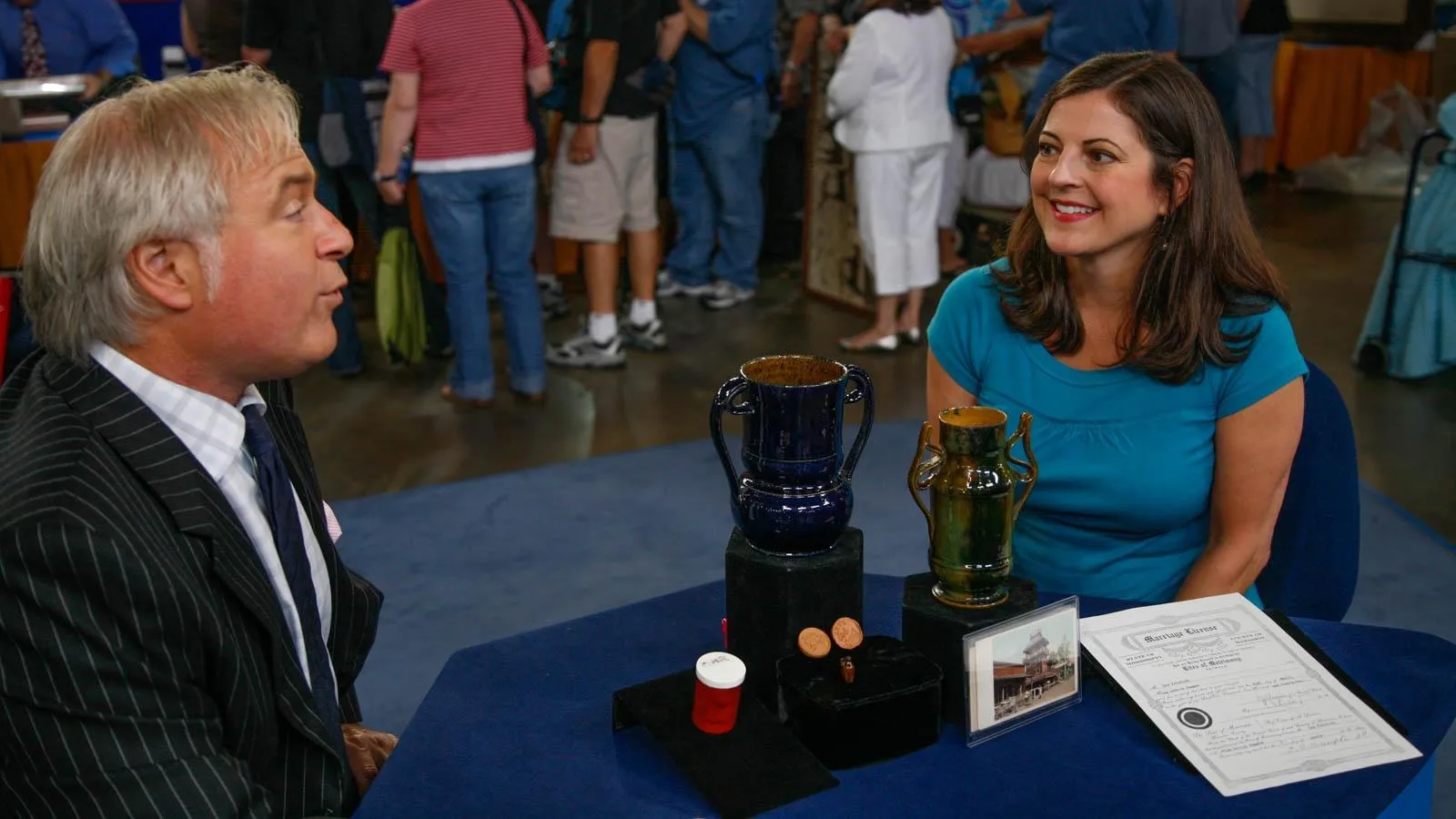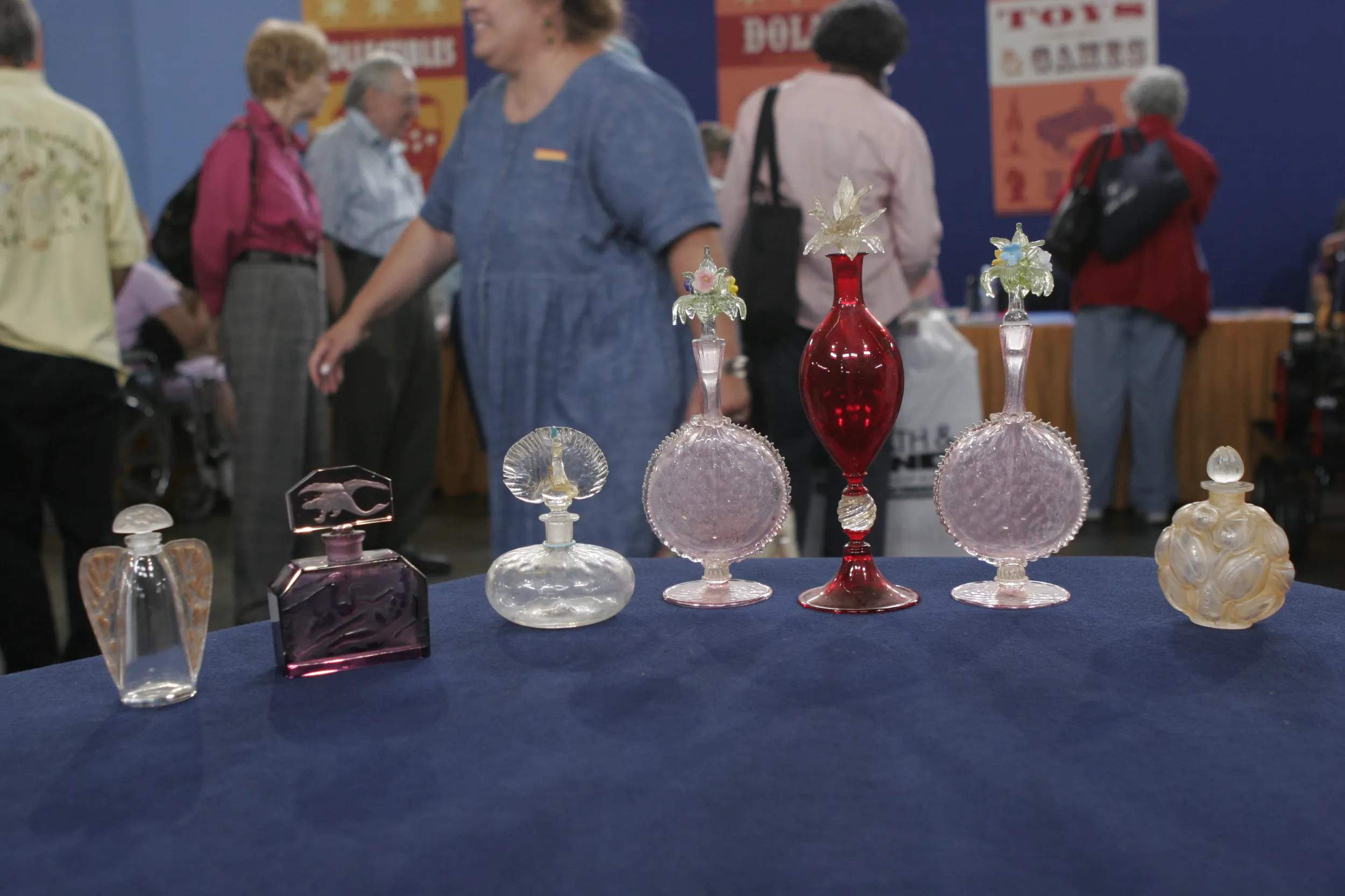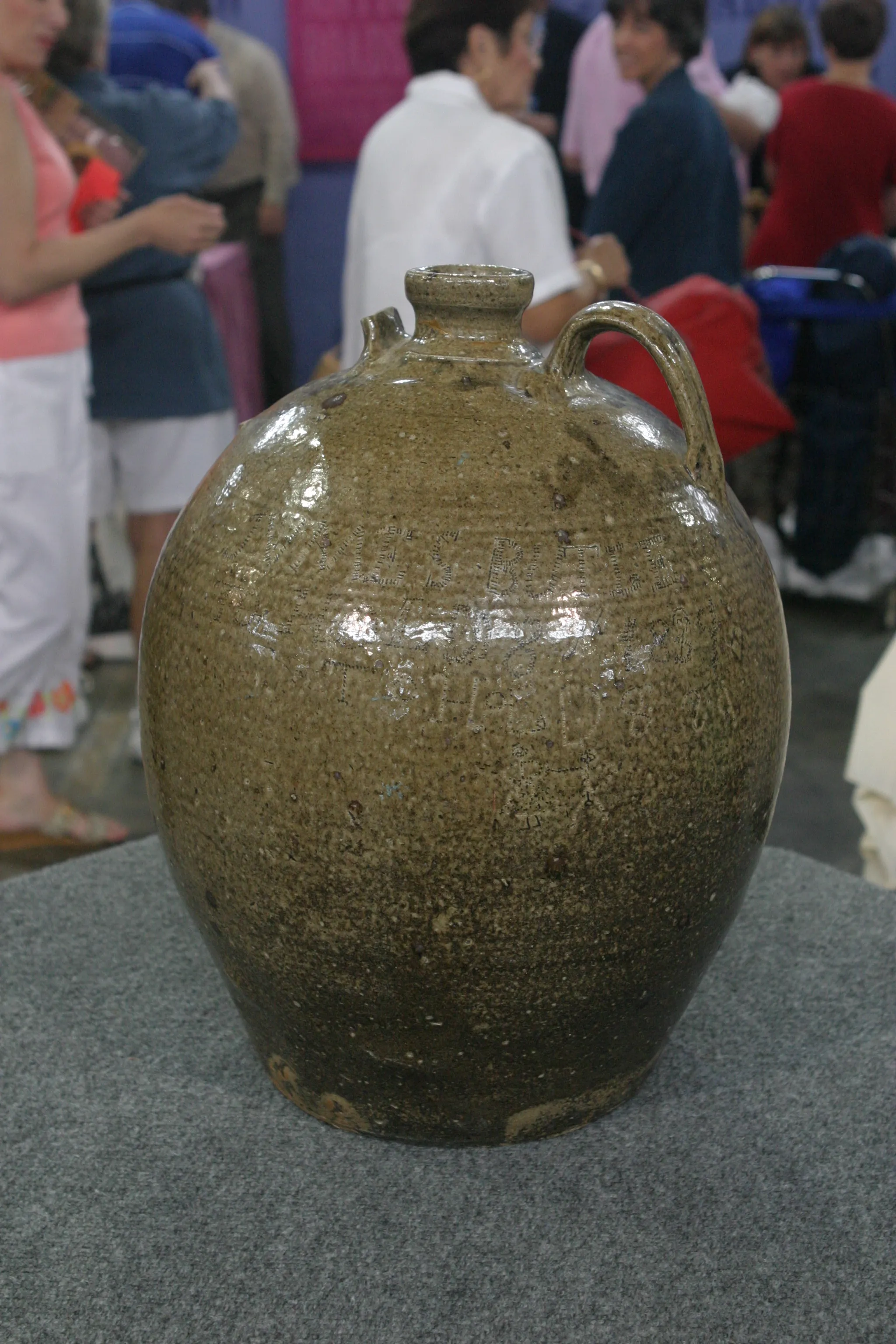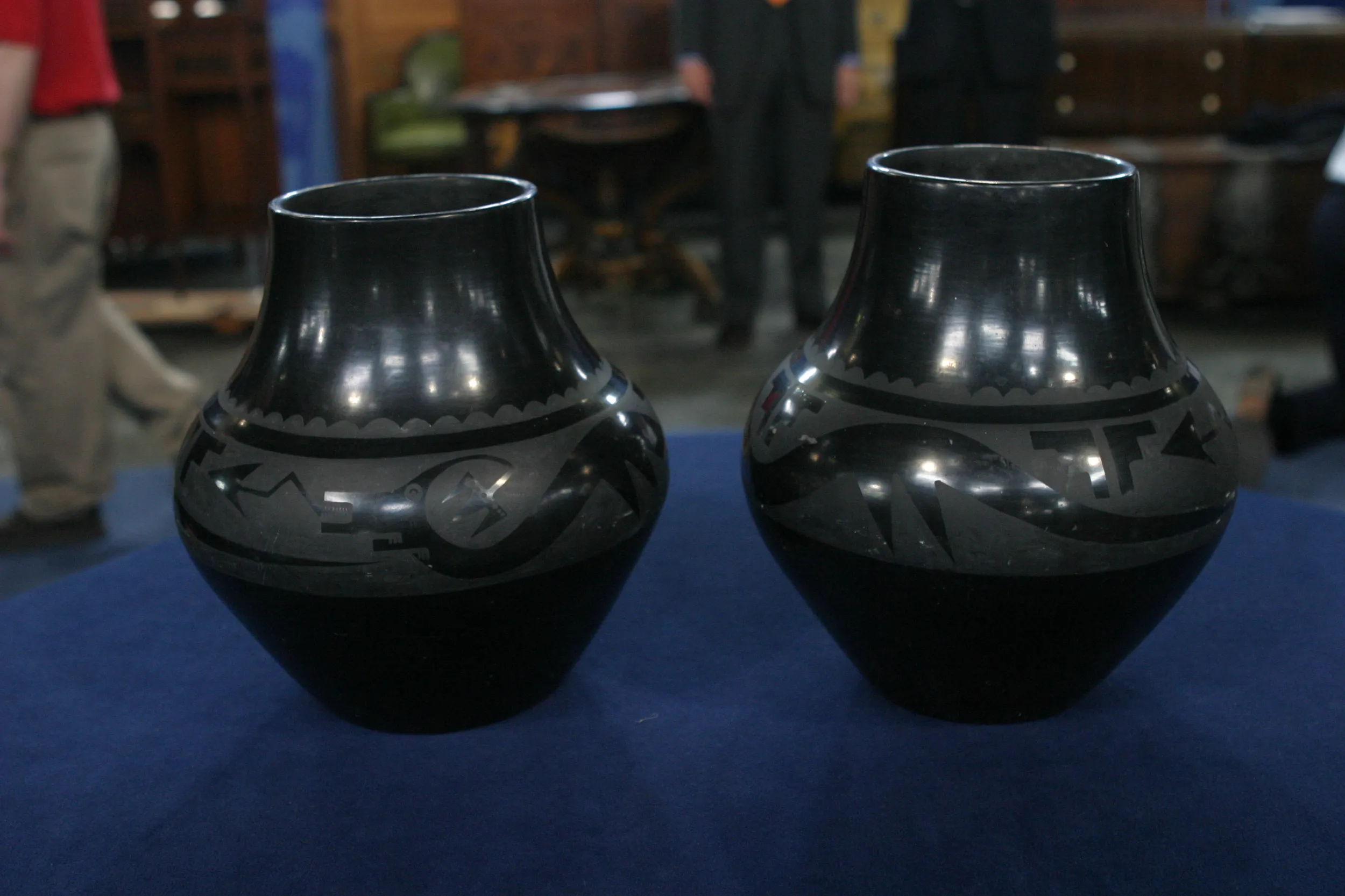GUEST: This is a teapot that I believe was originally my grandmother's, and then my mother had it and she gave it to me when I was married. I love the workmanship in it. I have worked in clay because I'm an art teacher, and it's just so beautifully constructed. I love it.
APPRAISER: And your grandmother, when do you think she got it?
GUEST: Perhaps in the '50s. My uncle traveled extensively around the world, and more specifically in the Orient, and he was always bringing home things, and so it could have been an antique piece that he brought to her.
APPRAISER: Here we have a teapot with a fish-form spout...
GUEST: Uh-huh.
APPRAISER: ...fish-form knop, fish on the sides...
GUEST: Yes.
APPRAISER: ...among stylized waves, clouds... There's waves down at the bottom, some of which is painted under the surface.
GUEST: Mm-hmm.
APPRAISER: And it's flat. But others, such as this cresting wave, is in relief, which is really amazing. Now, what a lot of people don't realize is that this basic form, which we associate with the West, is actually an, an Asian creation. The teapot as we know it...
GUEST: Yes.
APPRAISER: ...this ovoid shape with a loop handle, was created in China for the first time, and then that was adopted by the Japanese, and it became something that was extraordinarily popular in China and Japan far earlier than it was here in the West. The dark blue comes from cobalt and the sort of pale pink color comes from copper.
GUEST: Okay.
APPRAISER: Both of those colors were painted onto the unfired clay surface under the glaze. The particular color of this blue is a type of color that you don't find on Chinese wares.
GUEST: Really?
APPRAISER: In addition to that, the shape, with these naturalistic forms-- the fish leaping among the waves and the fish at the knop and the decoration overall-- is much more characteristic of Japanese design than you would find in China. So I think one can safely say it's Japanese, and to confirm that, I'm going to turn it over. We see this marvelous mark within a rectangle.
GUEST: Mm-hmm.
APPRAISER: And this mark is for a potter who worked in Japan. His name is Makuzu Kozan, who lived from 1842 to 1916.
GUEST: Wow.
APPRAISER: He was the potter to the imperial Meiji court.
GUEST: Oh, wow.
APPRAISER: He is acknowledged as the greatest potter of the late Meiji period in Japan.
GUEST: Wow.
APPRAISER: He lived in Kyoto and he worked in Yokohama, and he was born into a family of potters, but he is known for his exquisite designs. But more than that, the execution is absolutely flawless. The little gallery here at the top is pierced.
GUEST: Mm-hmm.
APPRAISER: And there are these roiling waves. Not only designed to sort of evoke the sense of water and these fish leaping among the waves, but also, it keeps the top from falling out.
GUEST: Yes.
APPRAISER: Probably dating from about 1890. So you'll need to know the value for insurance purposes.
GUEST: Yes.
APPRAISER: Let's try about $14,000.
GUEST: Wow! (laughs) Whoo. Wow, that's incredible.








